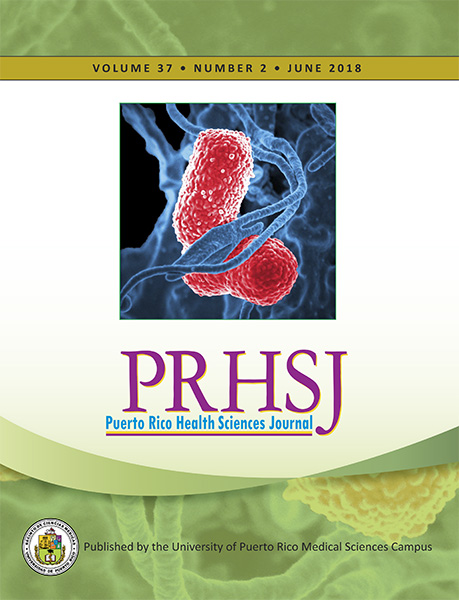Abstract
Objective: To determine what ocular symptoms and signs are most common and if there are any associations with comorbid conditions in patients with Chikungunya fever. Methods: A retrospective data review and analysis of the ocular symptomatology of 139 patients with Chikungunya fever who visited a local emergency room from August through September 2014. Frequencies were calculated, and Pearson’s chisquare test employed. All the patients were confirmed as having Chikungunya with IgM (ELISA) before admittance into the study. Results: Of the 139 patients, 42 (30.2%) had red eyes, 27 (19.4%) had conjunctivitis, and 13 (9.4%) had symptoms related to anterior uveitis, such as unilateral red eye, ciliary flush, or irregular pupil(s). Patients with a history of diabetes, hypertension, or cancer were more likely to have both red eyes (p = 0.033) and the symptomatology of anterior uveitis (p = 0.006), while patients with nausea or vomiting were more likely to have red eyes only (p = 0.001). Conclusions and Relevance: Red eyes, conjunctivitis, and anterior uveitis occur frequently in patients with Chikungunya fever. Systemic diseases, such as diabetes, hypertension, and cancer, may increase the risk of such ocular manifestations. Routine ophthalmic evaluation is warranted in patients with these medical conditions. The relevance of this study lies in the fact that this disease remains an important public health issue, since such ocular sequelae as may be present can range from mild to severe, either as an acute or a delayed manifestation.
Authors who publish with this journal agree to the following terms:
a. Authors retain copyright and grant the journal right of first publication with the work simultaneously licensed under a Creative Commons Attribution License that allows others to share the work with an acknowledgement of the work's authorship and initial publication in this journal.
b. Authors are able to enter into separate, additional contractual arrangements for the non-exclusive distribution of the journal's published version of the work (e.g., post it to an institutional repository or publish it in a book), with an acknowledgement of its initial publication in this journal.
c. Authors are permitted and encouraged to post their work online (e.g., in institutional repositories or on their website) prior to and during the submission process, as it can lead to productive exchanges, as well as earlier and greater citation of published work (See The Effect of Open Access).
